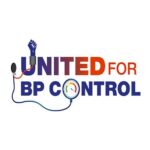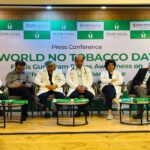New Delhi, November 03, 2018 : Representational Image
Over 5 million workers wear respirators in 1.3 million workplaces throughout the United States. So, it is an established fact that face masks do help preventing damage from particulate matter.
These respirators protect people against insufficient oxygen environments, harmful dusts, fogs, smokes, mists, gases, vapors, and sprays. These hazards are known to cause cancer, lung impairment, heart attacks, paralysis, or death.
Respirators are of two types. Some remove contaminants and particulate matter from the air and are called particulate respirators. The example is N 95 respirators.
Others are powered air-purifying respirators with cartridges/canisters which filter out chemicals and gases. These respirators protect by supplying clean respirable air from another source. Respirators that fall into this category include airline respirators, which use compressed air from a remote source, and self-contained breathing apparatus (SCBA), which include their own air supply. They are like personal air purifiers.
N95 mask, the easily available one are particulate respirators and filter particles ≥1 micrometer in diameter with at least 95 percent efficiency given flow rates up to 50 liters per minute. The main disadvantage is, to be effective, N95 masks must fit to a person’s face with less than 10 percent seal leakage. Second is 90% of our time we spend indoor and indoor pollution may be as bad or even worse than the outdoor pollution.
N95 respirators are not designed for children or people with facial hair. Because a proper fit cannot be achieved on children and people with facial hair, the N95 respirator may not provide full protection.
N95 respirators can be surgical or industrial types. The ones used in hospitals are surgical ones and the one used in the industry are industrial certified. The industrial ones are manufactured for use in construction and other industrial type jobs that expose workers to dust and small particles are regulated. These products are labeled “For occupational use.” NIOSH approves them for at least 95 percent filtration efficiency against certain non-oil based particles. Adjustable nose clip helps in obtaining a secure seal.
All respirators must be put on and taken off in an area outside of the contaminated area. Putting a respirator on or taking it off even for a few seconds in a contaminated area can expose the wearer to significant levels of hazards. All require fit-testing and must be adjusted to your face to provide the intended effectiveness of filtering 95 percent of particles with mass median diameter of 0.3 micrometers. They are not certified to be fluid resistant.
Simple surgical mask may not help in the pollution.







